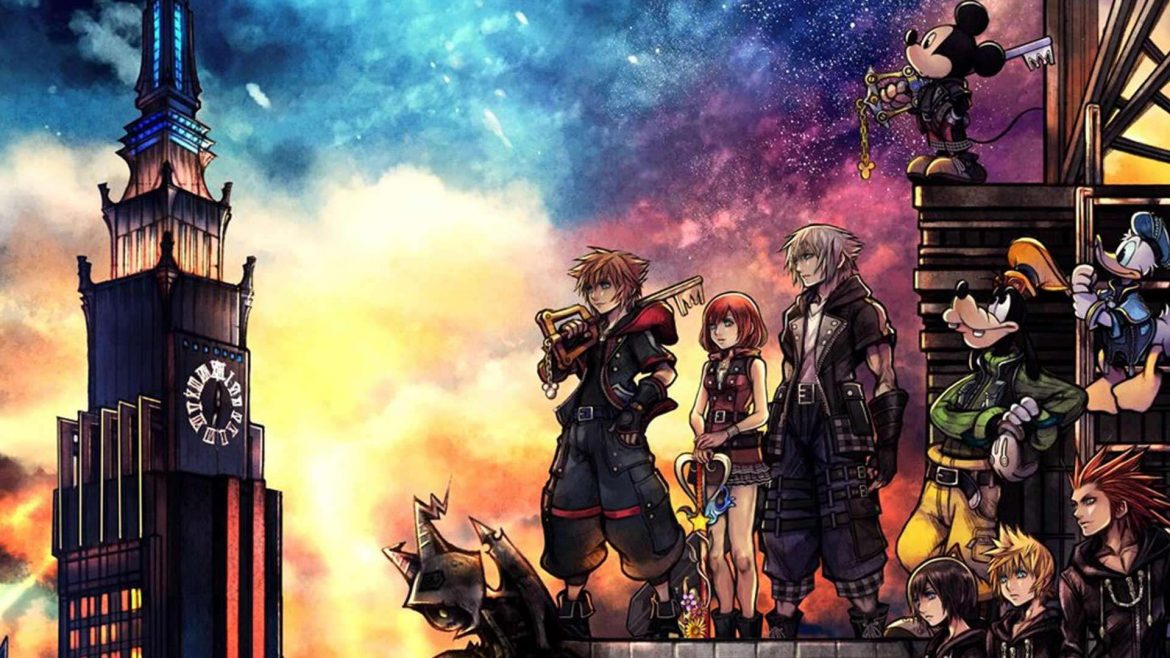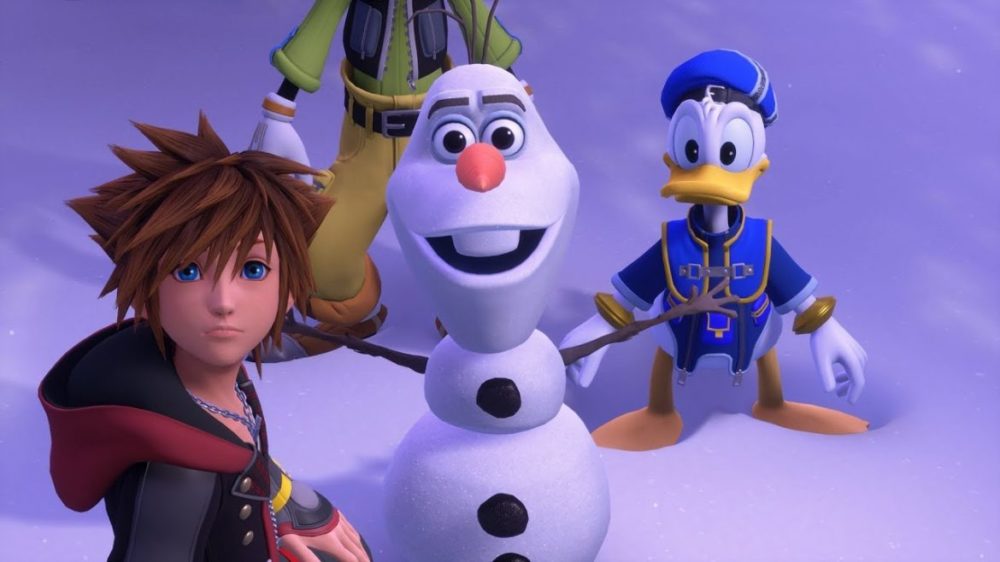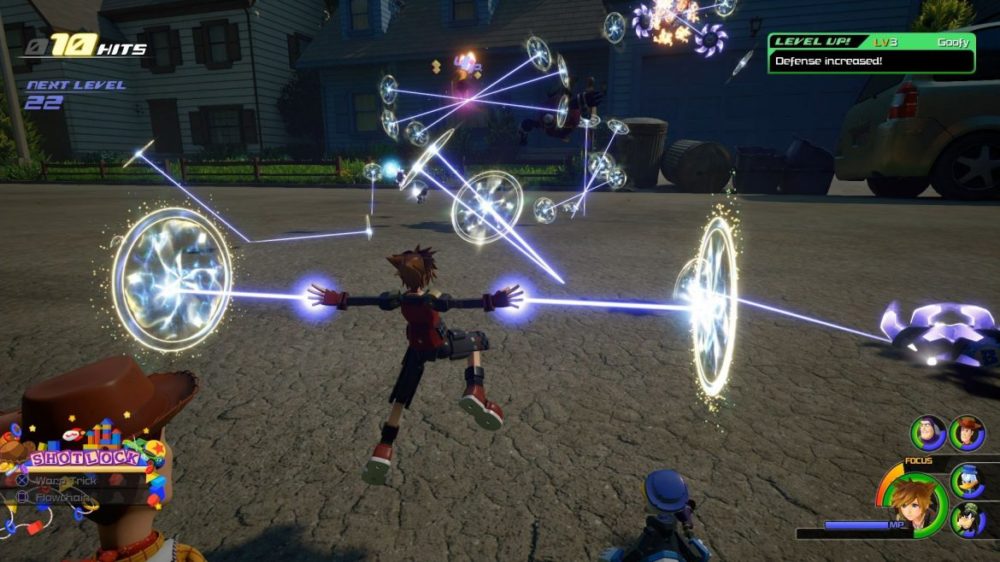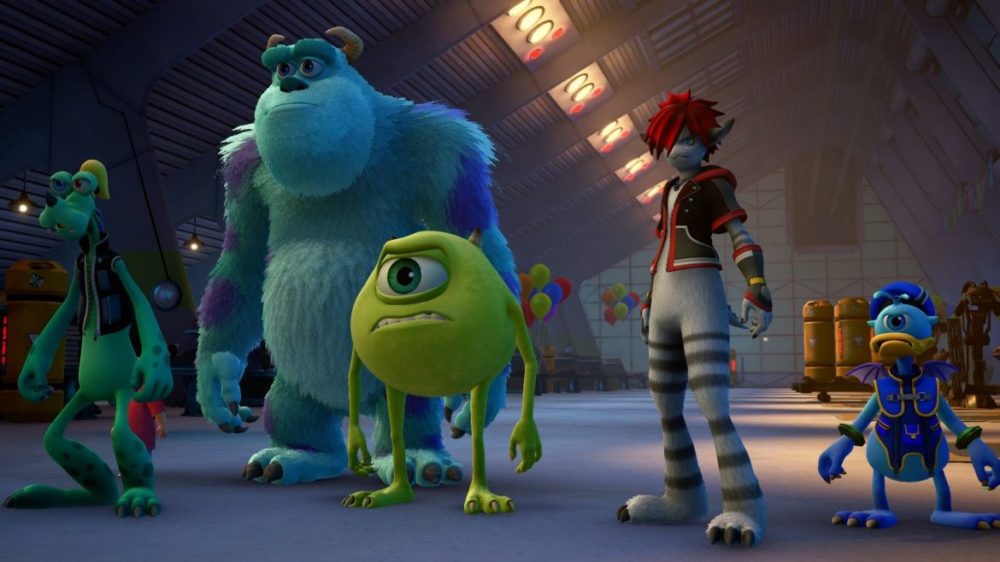TL;DR
Kingdom Hearts 3 is a visually stunning action RPG that beautifully blends Disney magic with Square Enix's RPG mechanics. While the narrative is complex, the game focuses on core themes of friendship and light versus darkness, making it accessible even for newcomers. It offers expanded worlds, refined combat with new abilities, and an impressive voice cast. Despite some technical performance issues and a sometimes dated feel compared to newer titles, Kingdom Hearts 3 is a heartfelt adventure that celebrates nostalgia while delivering a polished experience. Discover if this blend of classic and new is the magic you've been waiting for!
Kingdom Hearts is an experience that may require some time to fully appreciate. You might not immediately be captivated, but once invested, the depth of the game becomes apparent. Similar to a complex spirit, initial hesitation can give way to profound enjoyment with continued engagement. While we won’t suggest that the Kingdom Hearts series is quite as challenging as that comparison, it initially presents as a vibrant adventure rich with Disney references—extensive Disney content and nods to classic films. In essence, it represents a compelling synthesis between Square Enix’s signature Final Fantasy mechanics (now leaning towards action RPGs, a departure from the turn-based combat of earlier installments) and Walt Disney’s vast library of beloved characters and narratives. However, it benefits from patience and isn’t ideally suited for younger audiences, not due to its content, but because of its demanding control scheme and puzzle elements.
Attempting to summarize the overarching narrative, which began in 2002 and cultivated a dedicated following, is akin to interpreting the complete works of David Lynch. As with Lynch’s films, a comprehensive understanding isn’t essential to appreciate Kingdom Hearts and its numerous spin-offs. Instead, immerse yourself in the experience and allow the game’s emotional core to resonate. At its heart, Kingdom Hearts explores themes of light and darkness, good and evil, friendship and betrayal, emphasizing the importance of following one’s convictions. The plot and details serve as a backdrop to these central themes. From the idyllic Destiny Island, where Sora, Riku, and Kairi are introduced, to the diverse Disney worlds (Alice in Wonderland, Aladdin‘s Agrabah, Nightmare Before Christmas‘ Halloweentown, the Pinocchio-inspired Monstro’s belly, and the iconic Hollow Bastion), the cyberpunk elements of the second game, and the renewed conflict with Hades (from Hercules) in Kingdom Hearts 3, players are continually drawn into the experience, allowing newcomers to engage with the concept in its most refined and accessible form.
Kingdom Hearts 3 – A Blend of Nostalgia and Innovation
Kingdom Hearts 3 largely retains the core mechanics of its predecessors while introducing new elements. Series veterans will find themselves immediately comfortable, while new players are provided with a tutorial and a comprehensive “memory archive” to summarize the story from previous main entries and interquels (Kingdom Hearts 3 is, in fact, the tenth installment). Players once again control Sora, now older alongside his voice actor Haley Joel Osment, as well as the ever-present Donald and Goofy, traversing worlds that feel more expansive than ever before. The initial Kingdom Hearts titles, developed for the Playstation 2 and later remastered for PS3 and PS4, were inherently limited by the PS2’s technical capabilities. Higher resolution textures alone cannot overcome level design constraints. The original Kingdom Hearts could feel constrained, with somewhat cramped environments and sparsely populated areas. Kingdom Hearts 3, powered by Unreal Engine 4, delivers seamless, partially open worlds and expansive, coherent levels befitting current-generation hardware.
The established menu system, physical and magical attacks, inventories, and potions remain, supplemented by new special attacks (including a carnival-themed ability), “links” (summoned allies), and the ability to wield three Keyblades simultaneously, allowing for real-time switching and the creation of new combat combinations. Expect a significant number of button inputs and combos to manage. While potentially overwhelming, the game includes a tutorial to practice each element. While some may find success through basic attack patterns on easier difficulties, mastering the game’s challenges requires utilizing the full arsenal or extensive level grinding.
Kingdom Hearts 3 – An Animated Feature Film with Familiar Mechanics
Tetsuya Nomura’s dedication to Kingdom Hearts is evident, despite his legacy primarily residing within the Final Fantasy series. The game series has consistently been visually appealing, but now leverages technology to realize its full potential as a playable animated film. The 3D animated cutscenes, enhanced with CGI, emulate the feel of a unique Disney film. The level design and enemies are generally well-crafted, though some inconsistencies are present. Kingdom Hearts 3‘s prolonged development, including years on the PS3, suggests that it wasn’t entirely designed from the ground up for current-generation consoles, particularly when compared to titles like the God of War reboot. The familiarity of Kingdom Hearts 3‘s gameplay is a double-edged sword. While the camera and combat have improved, the game’s action sequences feel somewhat dated compared to titles like Final Fantasy XV. The original game, while charming, was often frustrating due to its camera and collision detection. The third installment addresses these issues, but boss fights can still feel somewhat chaotic and reminiscent of older design philosophies. Similar to The Last Guardian, Kingdom Hearts 3 occasionally reveals its extended development cycle and the technical limitations it faced.
Kingdom Hearts 3 – Technical Aspects and Platform Recommendations
Regarding technical performance, the game, previously a Playstation exclusive, is now available on Xbox One, in addition to Playstation 4. Similar to Ace Combat 7, the Unreal Engine 4 demonstrates the limitations of current-generation base hardware, highlighting the need for a new generation of consoles, likely in 2020. The game supports higher resolutions and frame rates up to 60fps. The Xbox One X achieves the highest resolution at 2560x1440p, while the PS4 Pro follows closely at 2304x1296p (approximately 60% of native 4K). Both consoles utilize a locked resolution, which offers its own advantages and disadvantages. The base PS4 achieves 1600x900p, while the Xbox One renders at 1280x720p, resulting in a noticeable decrease in detail and depth.
The game offers two frame rate modes: “stable” (targeting 30fps) and “default” (unlocked, aiming for 60fps). However, both modes exhibit suboptimal performance across all consoles. The “stable” 30fps mode fluctuates (29-32fps), creating a perceived inconsistency similar to the initial issues in Bloodborne. The unlocked mode on the base Xbox One performs closest to 60fps (55-60fps), while the Xbox One X and PS4 Pro range between 40-55fps. Surprisingly, the base hardware benefits most from the unlocked mode, albeit at a significantly lower resolution. A workaround for PS4 Pro users involves forcing 1080p output and disabling supersampling to achieve a consistent 60fps. While the resolution is reduced, the improved frame rate is often preferable. The need for this workaround is unusual, and a dedicated 1080p mode with a locked frame rate would be a welcome addition via a future patch. This solution is not applicable to the Xbox One X, as supersampling is automatically enabled in 1080p mode.
Despite these technical issues, the game remains playable, though the performance is somewhat disappointing considering the lengthy development cycle. Final Fantasy XV received numerous patches and DLC updates, evolving from technically sound to exceptional. This provides hope for similar improvements to Kingdom Hearts 3. However, these initial shortcomings are frustrating given the extensive development period.
The sound design in Kingdom Hearts 3 is exceptional, featuring extensive music and voice recording with a wealth of original voice actors. From Haley Joel Osment’s Sora to James Woods’ Hades, Kristen Bell (Anna from Frozen), T.J. Miller, Mark Hamill, and Rutger Hauer, the cast is impressive. The opening theme by Skrillex further enhances the experience. Takeharu Ishimoto, Tsuyoshi Sekito, and Yôko Shimomura return to compose the music, which is best enjoyed on a high-quality home theater system or with gaming headphones.
While Kingdom Hearts 3 is largely consistent across platforms, it retains a distinct Playstation feel, likely due to its historical exclusivity. The differences between versions are minimal, making the choice of platform largely inconsequential. During its first week, a majority of the five million copies sold were on PS4. The advantages of the PS4 version include the potential for improved frame rates on the Pro and the availability of the Complete Edition, which includes remastered versions of the original games and interquels as feature films. Although priced around 1,000 SEK on PSN, the Complete Edition offers at least 100 hours of playtime, justifying the cost. While Nomura hasn’t confirmed the collection’s availability on Xbox One, the success of Kingdom Hearts 3 suggests it is likely.
Kingdom Hearts 3 – A Heartwarming Role-Playing Adventure
Despite the frame rate issues and graphical inconsistencies, Kingdom Hearts 3 is a fantastic action RPG that celebrates Disney and Final Fantasy. It combines elements from both worlds, creating a unique and harmonious experience. The game is engaging, exciting, and philosophically touching, while also maintaining a lighthearted and whimsical tone. Its distinct Japanese style may not represent the latest advancements in game design, but its presentation and heart are truly remarkable. If you are new to Kingdom Hearts, the third installment is an excellent starting point, offering the most polished and enjoyable experience in the series (although the second game’s narrative and versatility remain noteworthy). It provides an opportunity to immerse yourself in beloved Disney and Pixar movies (including Toy Story!). While it has highs and lows (the immersive first level versus the less compelling Gummi Ship sections), it represents a significant achievement in the genre and rewards patient players. Dive in and prepare for a potentially lengthy and rewarding adventure.






